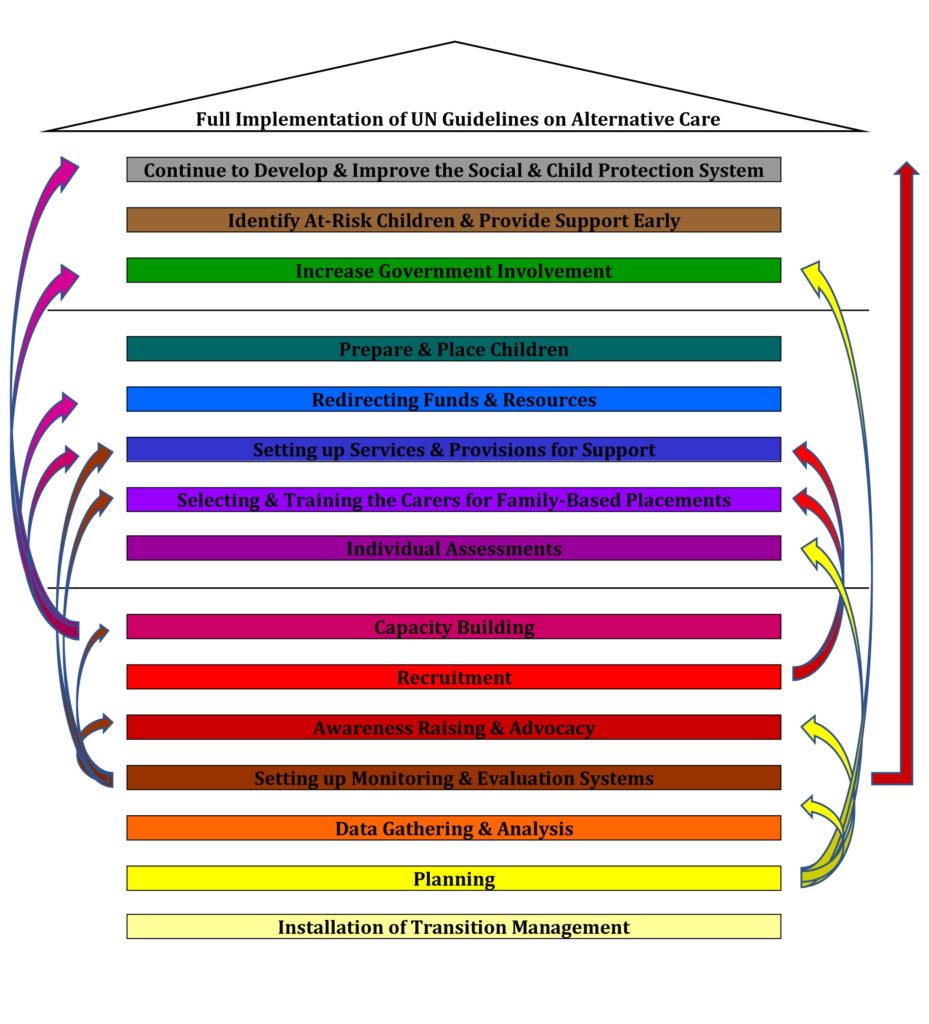Part 18 of the explanation with the ToC: Once children have been placed back with their own families, or in foster families or other family- and community-based alternative care placements, that is not the end of the road or the work. The necessary support has to continue to be given to the families and caregivers (whether they are the child’s own family or not), and the child’s situation and well-being need to be monitored.
For children who have returned to their own families the monitoring needs to continue as long as support is needed, and if no further support is needed it needs to continue until the situation appears stable and there has been no need for help or intervention for 6-12 months. For other children, monitoring has to take place as long as they are in an alternative care placement.
Monitoring involves making periodic visits to the child, to observe the living circumstances and the interactions between the child and other children, and the child and the adults in the household. These visits should also include conversations with the child alone, and conversations with the child’s caregivers. The aim is to find out if there are any problems or issues for which support is needed. An assessment needs to take place of whether the child is still safe and happy in the placement and if not, what can be done to improve the situation.
Aside from these monitoring visits, both the child and the adults should have the contact details of a dedicated social worker, whom they can call if there is a problem that they need help with. And if the child has been placed in an alternative care placement, his or her file and the entire situation needs to be reviewed regularly, to make sure that the placement is still in the child’s best interest. While previously it might not have been safe or in the child’s best interest to live with his or her parents, the family’s situation may have changed, making it possible for the child to return home. The Necessity Principle mentioned in the introduction does not only apply to the start of the process, but it applies at all times: the child should only be away from his or her family if this is in his or her best interest. If it becomes possible and safe for the child to return home, this should be facilitated.
To be aware of whether or not it is now possible for the child to return home, it is necessary to regularly review the child’s case. If there appears to be a possibility of returning the child to his or her family, an individual assessment of the child and the family needs to be made (again) and if the decision is made to move the child, the preparation stage needs to be applied before the child is moved. Moving a child from one family situation to another requires a similar preparation to the move from an institution into a family.

If you would like to read the explanation with the model from the very start, you can go HERE.
Please share this blog to help spread awareness.

